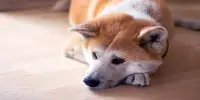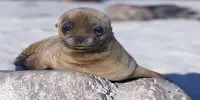Animal life all around the world is always contending for resources, territory, and survival, yet every day, battles beyond human comprehension rage — sometimes right beneath our feet. Who are the aggressors? Plants and fungus are included in the BBC’s current five-part series, The Green Planet, directed by David Attenborough. Plants and fungus may not appear to be very active players in the conflict, yet there is brutality amid the greenery, as this deep dive into their quiet feuds demonstrates.
In episode one, cutting-edge technology allows viewers to get an ant’s-eye perspective of the battle as we accompany an army of leaf cutter ants (Atta cephalotes) in Costa Rica as they serve their fungus master, Leucoagaricus.
Despite spending its whole existence motionless and underground, the fungus is the forest’s largest leaf eater. What kind of food does it provide? The fungus sends chemical signals to its army of ants, which clear routes through the forest by the millions in order to bring back a steady supply of leaf pieces. They will give whichever tree species the ants want, and when Leucoagaricus grows, it will fulfill its half of the bargain by growing mushrooms for the ants to consume.
The peace is disrupted, however, when tree species that are under assault release poisons into their leaves, which subsequently carried to the fungus-like so many small, green Trojan horses. As the fungus becomes poisonous, it sends the ant to a new variety of plants, allowing it to avoid unintentionally feasting on the poisoned chalice. David Attenborough, no stranger to plants and fungus, returns to the kingdoms as a broadcaster 26 years after The Private Life of Plants premiered on BBC 1.
It is safe to say that a lot has changed since then, the most important of which is how we can now shoot time-lapse photography in a way that makes plant movement appear as dynamic as warring octopuses. “Plants battle one another, plants strangle one another, and you can see it [in real time],” Attenborough explained. “That you see a plant throwing a tentacle out of nowhere!” You know it cannot see, yet you can see it attempting to locate its prey. When it eventually reaches the victim, it wraps itself around it and strangles it. It’s fairly rough stuff, you know.”
While the chemical warfare and severe traumas inflicted on some of Earth’s most leafy species may make you think they are tough, the series arrives at a crucial point in history when green areas are under attack from all sides. The Green Planet wants to convey the notion that plants and fungus are as deserving of our protection as any animal by depicting them as living, moving organisms that carry out ecosystem-sustaining operations.
“Plants are essential to the earth,” remarked Attenborough. “It’s become a cliché, but plants are responsible for every breath of oxygen we inhale and every mouthful of food we eat.” “Awareness [has evolved] of another reality that exists but that we seldom ever notice in its own right… This is about a parallel universe that exists alongside us and serves as the foundation for our own existence, but to which we have given little attention throughout time.” On BBC 1 and iPlayer on Sunday, January 9 at 7 p.m. UTC, you may see the first episode, “Tropical Worlds,” in all its gore and magnificence.
















